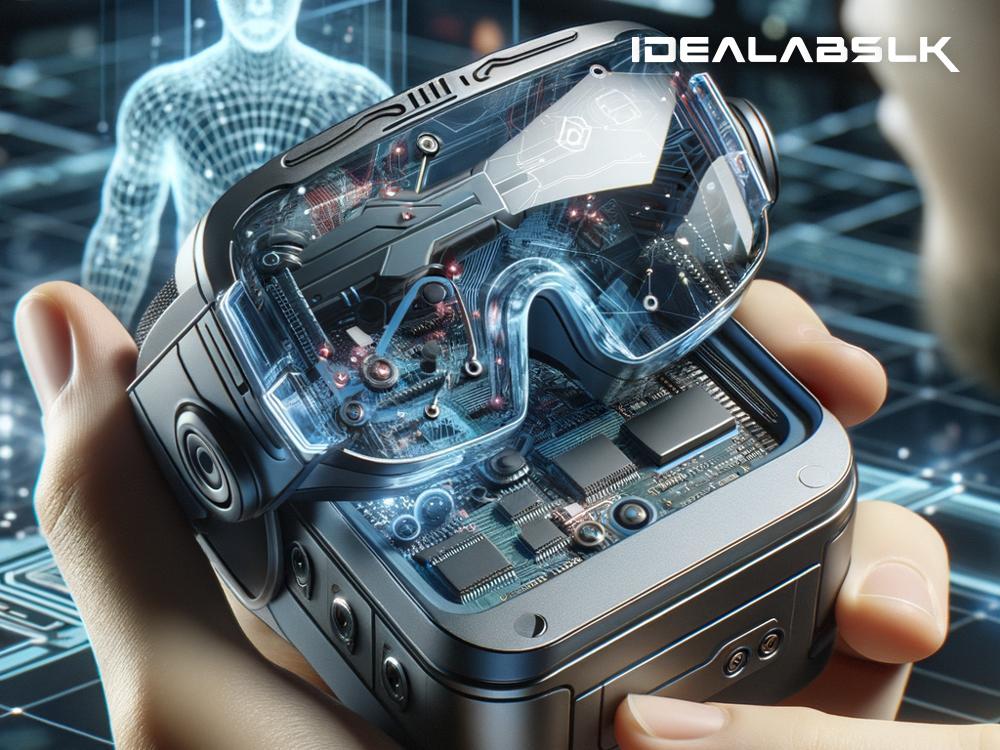How AI Powers Compact Gadgets for Augmented Reality Applications
In the exciting world of technology, augmented reality (AR) has emerged as a game-changer. It's like a bridge between the physical and digital worlds, allowing real-time interaction with enhanced, or "augmented," elements like images, sounds, and other sensations. But have you ever wondered how these compact gadgets you wear or hold, like smart glasses or handheld devices, manage to deliver such amazing AR experiences? The answer lies in the power of Artificial Intelligence (AI).
First off, it's crucial to understand what we mean by compact gadgets in the context of AR. These are devices small enough to be carried around easily, like smart glasses, smartphones, and wearable tech, which bring the marvels of AR right before our eyes or at our fingertips. The magic that makes them tick is AI.
AI: The Brain Behind the Magic
AI, or Artificial Intelligence, is like a smart brain built into devices. It's designed to think, learn, and make decisions much like a human, but at an incredibly faster speed. In AR applications, AI is the brain that processes information, understands what you're seeing or what you need, and then overlays digital content onto the real world in a way that feels seamless and interactive.
How AI Empowers AR in Compact Gadgets
-
Real-time Image Recognition: AI helps AR gadgets recognize objects, faces, and scenes in real-time. When you point your smartphone at a historical building, for example, AI quickly identifies it and AR overlays detailed historical information right on your screen. This magic is all thanks to AI's ability to understand and interpret images instantly.
-
Spatial Awareness: For AR to blend digital content smoothly with the real world, it must understand the layout and dimensions of physical spaces. AI, with technologies like simultaneous localization and mapping (SLAM), gives devices a sense of direction and spatial awareness. This ensures that digital objects in AR appear to actually "sit" on real-world surfaces or interact with them in realistic ways.
-
Gesture and Voice Recognition: AI enables AR gadgets to understand and respond to human gestures and voice commands. With AI, your smart glasses can recognize a hand wave as a command to display your messages or a voice command to navigate a map. This interaction feels natural and intuitive, further blurring the lines between the digital and physical realms.
-
Personalized Experiences: Thanks to AI, AR applications can learn from your habits and preferences to tailor personalized experiences. For instance, an AR shopping app could suggest products similar to what you've liked or bought in the past, displaying them in your room as if they were already yours. This level of personalization makes AR incredibly powerful and useful for everyday applications.
-
Efficiency and Speed: AI enhances the efficiency of compact AR gadgets, allowing them to process data quickly, despite their limited size. This means you get instant AR experiences without any noticeable delay, making everything from gaming to educational apps more immersive and enjoyable.
The Future of AI and AR: Where Are We Headed?
As AI technology continues to evolve, we can only expect AR to become even more integrated into our daily lives. Future compact gadgets powered by AI will likely offer even more personalized, interactive, and immersive AR experiences, making information and entertainment accessible in ways we've only begun to imagine.
Imagine smart glasses that can translate foreign languages in real time as you look at text or hear speech, or wearable devices that guide you through complex tasks with holographic instructions overlaid on your work area. These aren't far-off dreams; they're the next steps in the journey of AI and AR technology.
In Conclusion
AI is the driving force that powers compact gadgets for augmented reality, turning them into gateways between our physical world and an unlimited digital universe. By processing data in real-time, understanding our environment, and learning from our interactions, AI enables these devices to deliver seamless, personalized, and incredibly engaging AR experiences.
As we look forward to what the future holds, one thing is clear: the fusion of AI and AR is not just about creating gadgets that entertain or inform; it's about opening up new possibilities for how we learn, work, and connect with the world around us. The potential is boundless, and the journey has just begun.

